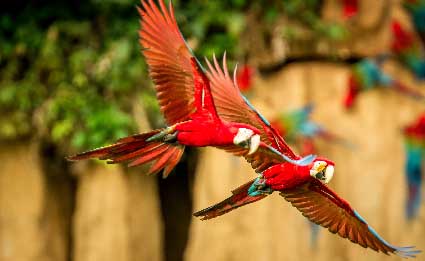Blue-throated Hillstar: New Hummingbird Species Identified in Ecuador (Oreotrochilus cyanolaemus)
In 2017, a group of ornithologists discovered a new hummingbird species (Oreotrochilus cyanolaemus) in southwestern Ecuador. Their discovery of the blue-throated hillstar was announced last week in The Auk, a publication by the American Ornithological Society.

Despite its small geographic size, Ecuador is a megadiverse country. For example, it is home to 132 hummingbird species.
Blue-throated Hillstar: New Hummingbird Species Identified in Ecuador
Despite having just been identified, they are likely already critically endangered. Here’s what you need to know.
What makes the blue-throated hillstar unique?
The blue-throated hillstar has an iridescent ultramarine blue throat, setting it apart from other hillstar hummingbirds.
Hillstar hummingbirds are native to the Andes Mountains. Other hillstar species include:
- Wedge-tailed hillstar
- White-sided hillstar
- Andean hillstar
- Ecuadorian hillstar
- Green-headed hillstar
- Black-breasted hillstar
Like iridescent blue? Check out Ecuador’s blue morpho butterfly.
Where does the blue-throated hillstar hummingbird live?
It lives in southwest Ecuador, in an area of just over 100 square kilometers (39 square miles). This area is located between the Jubones and Catamayo rivers, in the provinces of Loja and El Oro (bioone.org).
What is outstanding about the blue-throated hillstar is that it lives at an altitude of 3000 to 3700 meters (9800 to 12000 feet). And they only live along bush-lined creeks (phys.org).
How many blue-throated hillstars exist?
It is estimated that there are no more than 750 individuals.
What threats do they face?
Their population is threatened by animal grazing, mining, and fire. It is considered “critically endangered”.
Who discovered the blue-throated hillstar?
After first observing this unknown hummingbird in April 2017, Sornoza-Molina returned the following month with the following team:
- Francisco Sornoza-Molina (Ecuador’s Instituto Nacional de Biodiversidad)
- Juan Freile (Ecuadorian Committee of Ornithological Registries)
- Elisa Bonaccorso, Venezuela (San Francisco University in Quito)
- Jonas Nilsson, Sweden (Wild Sumaco)
- Niels Krabbe, Denmark (University of Copenhagen)
Oscillograms and sonograms of Oreotrochilus taxa
Oscillograms and sonograms of the territorial song (chase call) and single-noted call of Oreotrochilus taxa. Upper panel: territorial song of male O. cyanolaemus (XC419229). Fairly similar songs are given by all other members of the genus. Lower panel: single-noted calls presumed to be homologous. via americanornithologypubs.org
Ecuador is home to more than 1600 species of birds. Here are some ways to see Ecuador’s birds for yourself.
Related Tours

Birds of the Ecuadorian Amazon
Explore the amazing biodiversity of the Amazon Rainforest accompanied by a bird specialist guide

Birding at the Tumbesian Region
The Tumbesian lowlands are considered as an Endemic Bird Area by BirdLife International.

Birding at the Choco Cloud Forest and Andes Slopes
Ecuador’s Choco lowlands has the greatest concentration of restricted range endemic species in the world.
Ecuador Phone: (593) 2-3801125 / 2-3801149 Email: info@latinrootstravel.com Skype: latinrootstravel.ecuador Latin Roots Travel Av del Establo y Calle E, Centro Corporativo Financiero Site Center, Torre 3, Oficina 107, Quito – Ecuador
Powered by Auveron Studio


